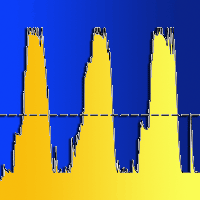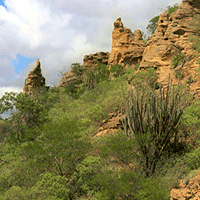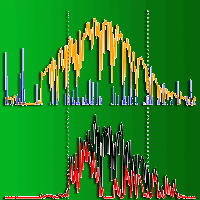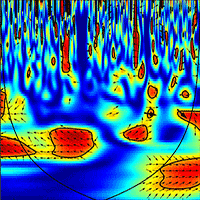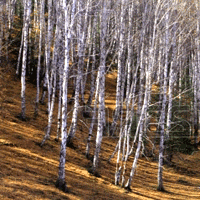
Spatial and temporal variation of drought impact on black locust (Robinia pseudoacacia L.) water status and growth
Dario Mantovani (1-2) , Maik Veste (1-3), Christian Böhm (1), Marco Vignudelli (4), Dirk Freese (1)
iForest - Biogeosciences and Forestry, Volume 8, Issue 6, Pages 743-747 (2015)
doi: https://doi.org/10.3832/ifor1299-008
Published: Jun 18, 2015 - Copyright © 2015 SISEF
Research Articles
Abstract
Stimulated by the rising demand for bioenergy, forestry practices for energy production are of increasing importance worldwide. Black locust (Robinia pseudoacacia L.) is a suitable tree species for biomass production in short-rotation plantations in East Germany, especially on marginal land where insufficient water and nutrients are a limiting factor for tree growth. Our study aims to clarify the spatial and temporal variability of the black locust growth through the analysis of the plant water status, and to evaluate the effect of adverse edaphic conditions on growth performances, amplified by periods of summer drought. The study was carried out at two sites presenting comparable climatic but different edaphic conditions: (i) fertile agricultural soil; and (ii) heterogeneous unstructured soil from a reclaimed post-mining area. During the vegetation period, the growth rate decreased in both sites following the plant water status in terms of pre-dawn leaf water potential. Particularly in the post-mining area, due to the adverse edaphic conditions, below the critical pre-dawn water potential value of -0.5 MPa, the stem growth was drastically reduced during a period of summer drought. However, the trees could cope with the extreme soil and weather conditions in the post-mining site without perishing.
Keywords
Agroforestry, Drought Stress, Soil Water Availability, Soil Heterogeneity, Reclamation
Authors’ Info
Authors’ address
Maik Veste
Christian Böhm
Dirk Freese
Brandenburg University of Technology Cottbus-Senftenberg, Institute of Soil Protection and Recultivation, Konrad-Wachsmann-Allee 6, D-03046 Cottbus (Germany)
CRA-OLI - Centro di Ricerca per l’Olivicoltura, v. Nursina 2, I-06049 Spoleto (PG - Italy)
CEBra - Centre for Energy Technology Brandenburg e.V., Friedlieb-Runge-Strasse 3, D-03046 Cottbus (Germany)
University of Bologna, Department of Agricultural Sciences, v. Fanin 44, I-40127, Bologna (Italy)
Corresponding author
Paper Info
Citation
Mantovani D, Veste M, Böhm C, Vignudelli M, Freese D (2015). Spatial and temporal variation of drought impact on black locust (Robinia pseudoacacia L.) water status and growth. iForest 8: 743-747. - doi: 10.3832/ifor1299-008
Academic Editor
Gianfranco Minotta
Paper history
Received: Mar 26, 2014
Accepted: May 15, 2015
First online: Jun 18, 2015
Publication Date: Dec 01, 2015
Publication Time: 1.13 months
Copyright Information
© SISEF - The Italian Society of Silviculture and Forest Ecology 2015
Open Access
This article is distributed under the terms of the Creative Commons Attribution-Non Commercial 4.0 International (https://creativecommons.org/licenses/by-nc/4.0/), which permits unrestricted use, distribution, and reproduction in any medium, provided you give appropriate credit to the original author(s) and the source, provide a link to the Creative Commons license, and indicate if changes were made.
Web Metrics
Breakdown by View Type
Article Usage
Total Article Views: 55437
(from publication date up to now)
Breakdown by View Type
HTML Page Views: 46075
Abstract Page Views: 3725
PDF Downloads: 4176
Citation/Reference Downloads: 26
XML Downloads: 1435
Web Metrics
Days since publication: 3856
Overall contacts: 55437
Avg. contacts per week: 100.64
Citation Metrics
Article Citations
Article citations are based on data periodically collected from the Clarivate Web of Science web site
(last update: Mar 2025)
Total number of cites (since 2015): 22
Average cites per year: 2.00
Publication Metrics
by Dimensions ©
Articles citing this article
List of the papers citing this article based on CrossRef Cited-by.
References
IUSS Working Group WRB 2006. World reference base for soil resources. World Soil Resources Reports No. 103, Food and Agriculture Organization of the United Nations, Rome, Italy.
Gscholar
Einfluss von Trockenstress auf Photosynthese, Transpiration und Wachstum junger Robinien (Robinia pseudoacacia L.) [Influence of drought stress on photosynthesis, transpiration, and growth of juvenile black locust]. Forstarchiv 84: 35-42. [in German with English summary]
Online | Gscholar
Biologische Stickstoff - Fixierung der Robinie [Biological nitrogen fixation of Robinina]. AFZ-Der Wald 2/2013: 40-42.
Gscholar

